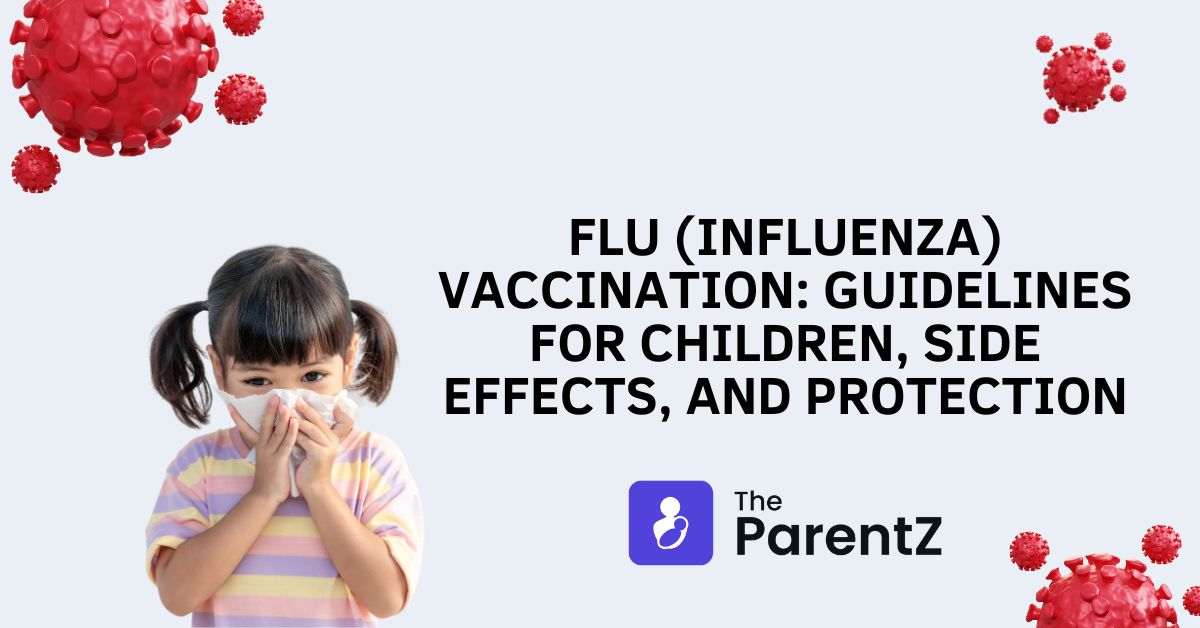When to give shot?
Inactivated vaccines are used for influenza in most immunisation programmes. A single dose is given for vaccination but the dose varies according to the age of the child. If a child who was previously unimmunised and has not been infected under 9 years of age has to receive vaccination two doses are given with a 3-4 week interval between them. Vaccination of influenza does not give lifelong immunity and annual revaccination is recommended.
Why should the shot be given?
Vaccination against influenza is important to protect your child against infection. Once vaccinated, the child develops antibodies which reach a maximum in around 2 weeks. Protective antibodies are produced and vaccination offers upto 90% protection against the disease. Influenza virus is constantly mutating and new strains appear yearlong. Annual vaccination with specific strain targeting vaccines is recommended for appropriate protection, especially if your child has low immunity or suffers from chronic conditions which lower the immunity of the body.
What are the side effects?
- Local reactions may develop. This includes pain, swelling and redness in the area where the vaccine was injected. This is not a cause for concern and it will resolve spontaneously over the next few days.
- Anaphylaxis or an allergic reaction to the vaccine may occur. It can be recognised early by reddening of skin and generalised itching followed by difficulty breathing. A child who develops anaphylaxis should be brought to the hospital immediately. It can be managed by giving a shot of anti-allergic
- Guillain Barre Syndrome may sometimes develop as a side effect of the influenzae vaccine. It refers to ascending paralysis of the body. The child develops paralysis which starts in the lower limb and gradually progresses upwards towards the face.
What is influenza?
Influenza is a type of acute respiratory illness which is caused by the influenza virus. There are four strains of the virus – A, B, C, D of which the first two are responsible for global epidemics. Influenza is a common disease worldwide and due to rapid mutations in the strains has an unpredictable behaviour.
What are symptoms of influenza?
Influennza produces a range of symptoms from mild to severe illness and these include the following:
- The onset of infection is usually characterised by development of fever and chills. Child feels cold when the fever rises.
- Child complains of aches and pains all over the body.
- Child feels weak and lethargic.
- Child also develops a cough.
- More severe forms of the disease may lead to difficulty in breathing, fast breathing and the child turning blue.
Is influenza serious?
Influenza is a relatively serious infection in young children as it produces more severe symptoms in children as compared to adults. The severity of the disease also stems from the fact that the influenzae virus is constantly mutating and new strains appear all the time especially in the winter months. Severe symptoms which develop in children can also lead to complications which affect the lungs.
How does influenza spread?
Influennza virus spreads from person to person by droplets. It spreads on close personal contact with an infected person. Coughing, talking and sneezing of an infected individual releases droplets which may contain the virus and spreads on coming into contact with the respiratiory tract of another uninfected child.








Be the first one to comment on this story.